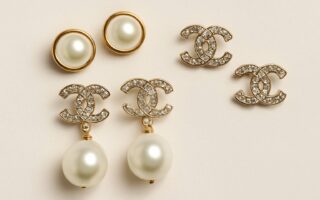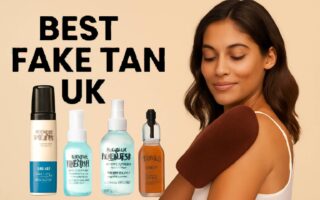When it comes to creating a long-lasting, smooth makeup look, one product reigns supreme: primer. Whether you’re a makeup novice or a seasoned pro, finding the best primer for your skin type and makeup goals can completely transform your beauty routine. With so many options on the market—hydrating, mattifying, pore-filling, illuminating—it’s easy to feel overwhelmed. But don’t worry, we’re here to break it all down for you.
Primers act as a bridge between your skincare and makeup. They prep the skin, blur imperfections, minimize pores, and ensure your foundation goes on like a dream and stays put. This article explores what makes a primer great, highlights some of the top-rated formulas, and offers insider tips for choosing the best one for your unique skin needs. Let’s dive into the world of primers and find the best one to elevate your glam game.
What Makes a Primer the Best?
Smooth Application and Texture
The best primer should feel lightweight and glide effortlessly over the skin. It shouldn’t feel heavy, greasy, or clog pores. Look for silicone-based primers for that silky, blurred finish, or water-based ones for a more breathable feel.
Skin Type Compatibility
Not all primers are created equal. A mattifying primer may be ideal for oily skin, while someone with dry skin should opt for a hydrating or illuminating formula. If you have sensitive or acne-prone skin, look for primers that are non-comedogenic and fragrance-free.
Long-Lasting Effect
A good primer should help your makeup last all day. This means keeping oil at bay, preventing your foundation from sliding, and reducing creasing or patchiness.
Additional Skincare Benefits
Some of the best primers do more than just prep your skin—they offer added skincare benefits like SPF protection, anti-aging ingredients, or hydrating agents like hyaluronic acid.
Top-Rated Primers to Try
Smashbox Photo Finish Foundation Primer
One of the industry’s most iconic primers, this silicone-based formula blurs fine lines and pores with a velvety finish. It’s a favorite among professionals for photo-ready skin.
e.l.f. Power Grip Primer
A budget-friendly option that delivers serious performance. Infused with hyaluronic acid, this primer grips makeup for extended wear and adds a healthy dose of hydration.
Tatcha The Silk Canvas
Luxury meets skincare in this balm-like primer. It’s packed with silk extracts, antioxidants, and botanicals to smooth, protect, and prime in one step.
Milk Makeup Hydro Grip Primer
Beloved by dewy skin lovers, this gel-based primer hydrates deeply while providing a sticky base that locks makeup in place for hours.
Benefit POREfessional Face Primer
If large pores are your main concern, this cult classic delivers. It smooths skin texture instantly and creates a poreless canvas.
Choosing the Best Primer for Your Skin Type
For Oily Skin
If your makeup tends to melt off by midday, a mattifying primer is your best friend. Look for formulas with oil-absorbing ingredients like salicylic acid or silica.
Top pick: Fenty Beauty Pro Filt’r Mattifying Primer
For Dry Skin
Hydrating primers with ingredients like glycerin, squalane, or hyaluronic acid will prevent your makeup from clinging to dry patches.
Top pick: Too Faced Hangover Replenishing Face Primer
For Combination Skin
You’ll want a balanced formula that hydrates dry areas while controlling oil in the T-zone.
Top pick: Laura Mercier Pure Canvas Primer – Perfecting
For Sensitive Skin
Gentle, fragrance-free primers with soothing ingredients like aloe vera or chamomile are best.
Top pick: First Aid Beauty Coconut Skin Smoothie Primer
How to Apply Primer Correctly
Step 1: Start with Clean Skin
Cleanse and moisturize your face as usual. Primer is not a replacement for skincare—it complements it.
Step 2: Use the Right Amount
A pea-sized amount is typically enough. Apply it with your fingers for better control and to warm up the product.
Step 3: Focus on Problem Areas
If you’re targeting texture, shine, or pores, apply more product to those zones. Common spots are the T-zone, cheeks, and chin.
Step 4: Let It Set
Wait about 30 seconds before applying your foundation to allow the primer to settle into the skin. This ensures better adhesion and a smoother finish.
Common Primer Myths Debunked
“Primer Isn’t Necessary”
While it’s true you can apply foundation without a primer, using one significantly improves wear time and finish—especially for special events or long days.
“Primer Causes Breakouts”
Not if you choose the right one. Many modern primers are formulated to be non-comedogenic. Just make sure to cleanse your skin thoroughly at the end of the day.
“One Primer Fits All”
Skin is unique. Just like you tailor your skincare and foundation, your primer should be chosen with your specific skin type and concerns in mind.
Expert Tips for Using Primer
Mix with Foundation for Lighter Coverage
For a more natural look, mix a drop of your favorite primer with your foundation. It sheers out the coverage and creates a dewy effect.
Layer Primers for Custom Effects
Some makeup artists layer a pore-filling primer on the T-zone and a hydrating one on the cheeks. Don’t be afraid to experiment.
Try Primer on Eyelids and Lips
Primers aren’t just for your face. Eye primers help shadow last longer, and a dab on your lips before lipstick can enhance smoothness and longevity.
Conclusion
Finding the best primer is a personal journey, but one that’s totally worth it. The right primer can turn a good makeup day into a flawless one. Whether you need oil control, hydration, or just a smoother canvas, there’s a primer out there tailored for your needs.
So next time you’re prepping your skin, don’t skip this magical step. Test a few options, note how your skin responds, and settle on the one that helps your look last longer and shine brighter.
Have a favorite primer? Share your thoughts in the comments—we’d love to hear what works best for you!
FAQs About Best Primer
What is the best primer for oily skin?
For oily skin, look for mattifying primers like Fenty Beauty Pro Filt’r or Benefit POREfessional. They control shine and keep makeup intact.
Can I wear primer alone?
Absolutely! Many primers improve the skin’s texture and give a smooth, natural finish, even without foundation.
How long should I wait after applying primer?
Wait 30 seconds to a minute before applying foundation. This helps the primer set properly and adhere better.
Do I need different primers for summer and winter?
Yes—seasonal changes affect skin needs. Use a hydrating primer in winter and a mattifying one in summer if your skin gets oily.
How do I know if my primer is working?
Your makeup should apply more evenly, last longer, and look smoother. If it doesn’t, try a different formula more suited to your skin type.



